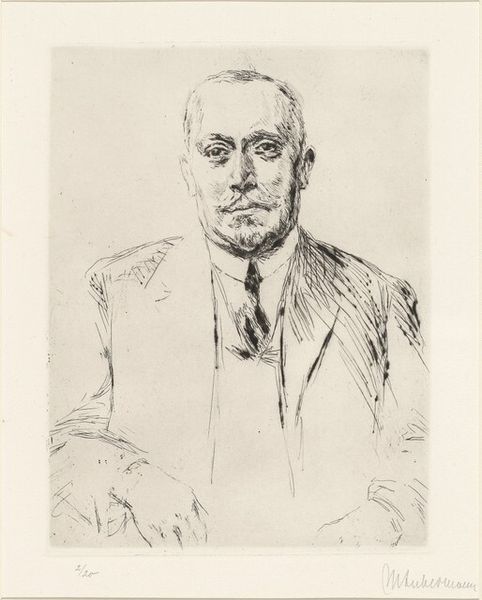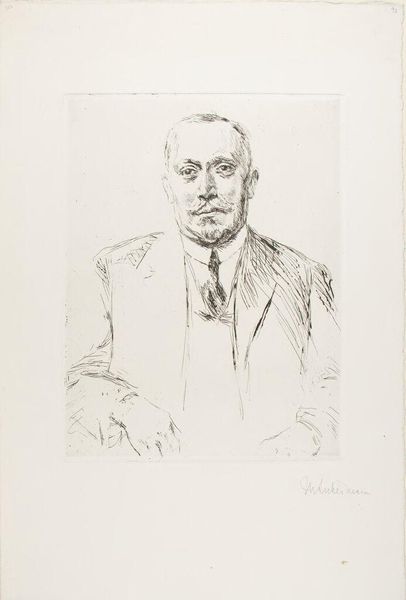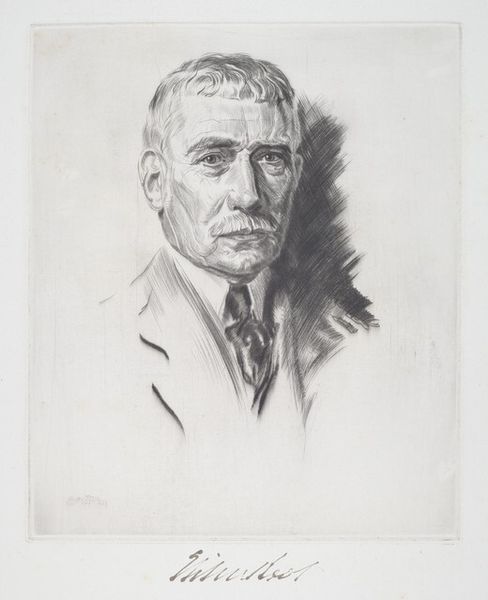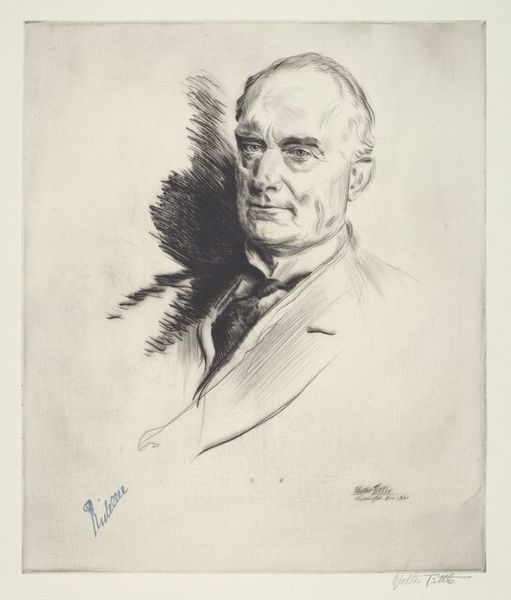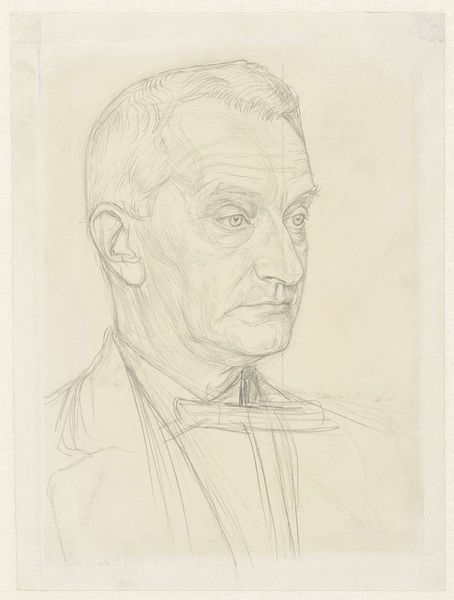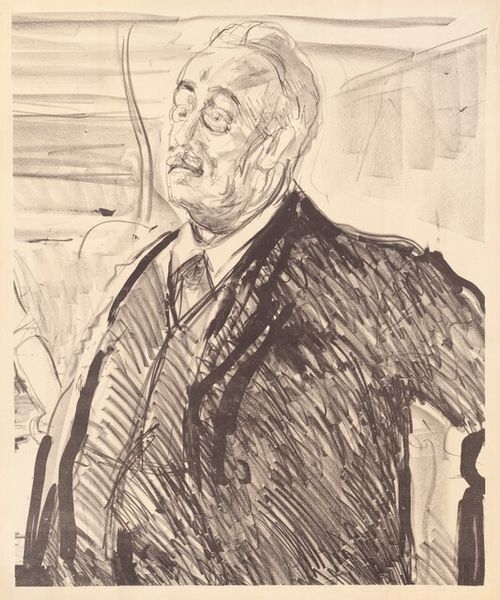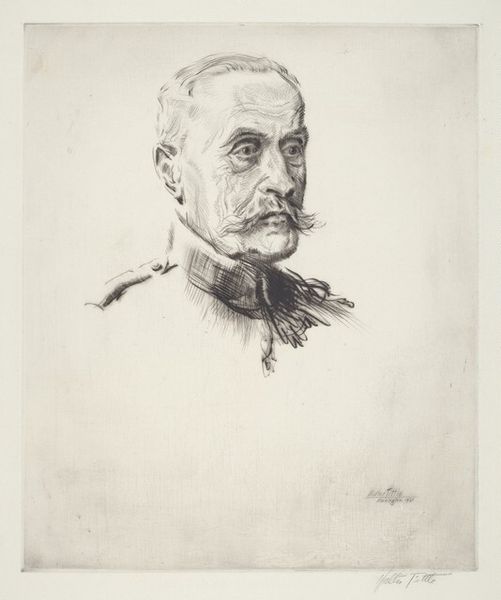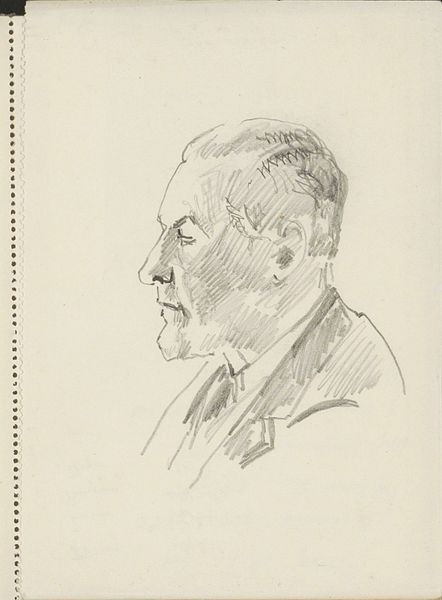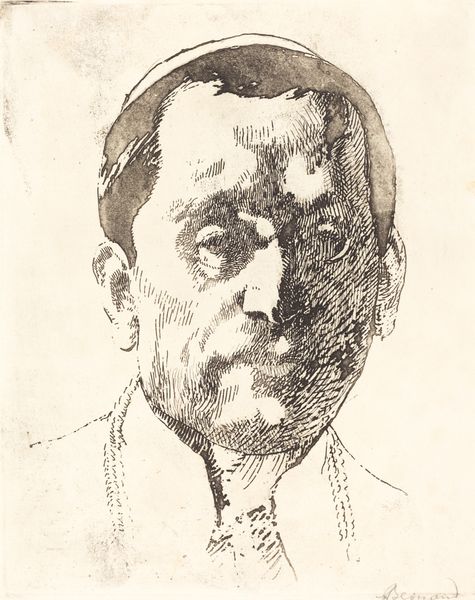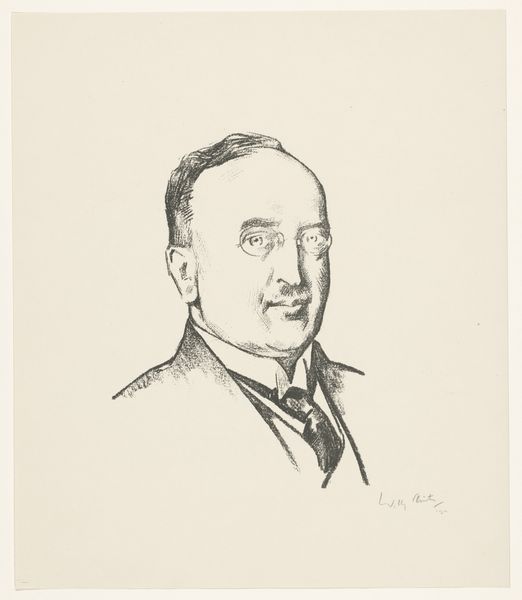
drawing, print, graphite
#
portrait
#
drawing
#
facial expression drawing
# print
#
charcoal drawing
#
portrait reference
#
pencil drawing
#
graphite
#
animal drawing portrait
#
portrait drawing
#
facial portrait
#
portrait art
#
modernism
#
fine art portrait
#
realism
#
digital portrait
Dimensions: plate: 30.48 × 25.4 cm (12 × 10 in.)
Copyright: National Gallery of Art: CC0 1.0
Editor: Here we have Walter Tittle's portrait of "Monsieur Rene Viviani, Former Premier of France," created in 1921, using graphite or charcoal, I believe. The man's gaze is rather intense, and the medium seems to capture every line on his face. What do you make of it? Curator: I'm immediately struck by the *process* here. Consider the materiality of graphite itself – a mineral, extracted, processed into a tool. Tittle uses that tool to portray a man, yes, but it’s also a physical record of labor. We see the artist's hand, the pressure applied, the accumulation of graphite on paper. Editor: So you’re saying the portrait is not just about Viviani, but also about Tittle's act of making? Curator: Precisely. Look at the unfinished quality below the suit. It exposes the working methods, the "raw materials," if you will. In that sense, isn't the image also about *reproducing* images, making this one potentially infinitely reproducible using techniques such as printmaking. This moves the artistic merit from concept and into tangible goods that can be bought and sold. And, we shouldn’t forget that this portrait depicts a *former* premier – a man defined by his labor within a specific political-economic structure. His "value" is shifting, subject to change. Editor: That’s a completely different way of seeing it! It’s almost like a document of industrial techniques. I hadn’t considered the socio-economic aspects of portraiture, especially with someone who held public office. Curator: It shifts our attention from the individual to the structures of power that shaped him, and how that is then materially expressed. The medium and how it is produced speak volumes. Editor: I'll never look at a simple portrait the same way again. I’ll definitely pay more attention to not just who, but *how* something was made, and *why*.
Comments
No comments
Be the first to comment and join the conversation on the ultimate creative platform.
